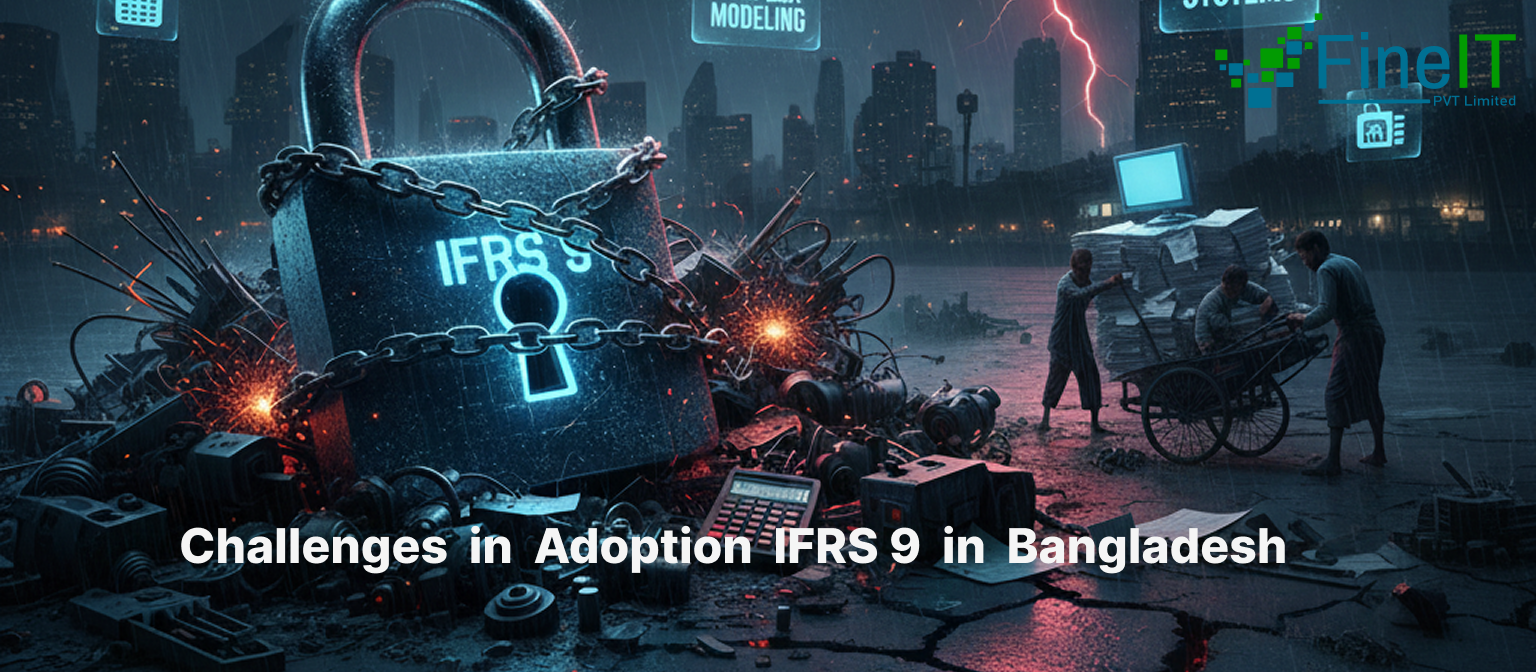The transition to International Financial Reporting Standard 9 (IFRS 9) presents a significant modernization effort for Bangladesh’s banking sector. While the long-term benefits of enhanced risk management and financial stability are clear, the path to full adoption is fraught with several complex challenges that require strategic planning and substantial investment.
The Intricacies of IFRS 9 Adoption
IFRS 9, with its forward-looking Expected Credit Loss (ECL) model, fundamentally changes how financial assets are accounted for. This shift moves away from the “incurred loss” model of IAS 39, demanding a proactive assessment of potential credit losses over the entire lifetime of a financial instrument. For Bangladesh, a developing economy with a unique market structure, this transition introduces a distinct set of operational and technical hurdles.
Key Challenges for Bangladeshi Banks
1. Data Availability and Quality
The bedrock of the ECL model is high-quality, granular historical data. Bangladeshi banks often struggle with:
- Incomplete Data: Lack of comprehensive historical data on defaults, recoveries, and credit risk parameters spanning several economic cycles.
- Data Silos: Information scattered across disparate systems, making aggregation and integration difficult.
- Data Inconsistency: Variations in data definitions and recording practices across different branches or legacy systems.
- Macroeconomic Data: The need for robust, reliable, and forward-looking macroeconomic variables specific to the Bangladeshi context (e.g., GDP growth, inflation, interest rates) for accurate forecasting.
2. Modelling Expertise and Capacity
Developing and implementing the complex statistical models required for ECL calculation (Probability of Default – PD, Loss Given Default – LGD, Exposure at Default – EAD) is a major undertaking:
- Skill Shortage: A significant scarcity of professionals with expertise in quantitative modeling, econometrics, and data science within the banking sector.
- Model Complexity: The inherent difficulty in building, validating, and back-testing sophisticated models that accurately predict future credit losses, especially for diverse loan portfolios and segments.
- Lack of Benchmarking: Limited access to industry-wide benchmarks or best practices specific to the Bangladeshi market for model calibration and validation.
3. Technology and System Infrastructure
The existing IT infrastructure in many Bangladeshi banks may not be fully equipped to handle IFRS 9 requirements:
- Legacy Systems: Older systems may lack the flexibility to capture granular data, perform complex ECL calculations, or integrate with new modeling platforms.
- Software Investment: The need for substantial investment in new software, data warehousing solutions, and risk management systems capable of handling the computational demands of IFRS 9.
- Integration Challenges: Difficulty in integrating disparate systems (core banking, loan origination, risk management) to ensure a seamless flow of data for ECL calculations and reporting.
4. Regulatory Alignment and Interpretation
The Bangladesh Bank (BB) is actively guiding the transition, but alignment remains a challenge:
- Phased Implementation: Managing the transition while adhering to both existing regulatory provisioning requirements and the new IFRS 9 standards during the interim period.
- Guidance Interpretation: Banks need to accurately interpret and apply the BB’s specific guidelines and roadmaps for IFRS 9 adoption, which may evolve. The BB has set a December 2027 deadline for full ECL implementation.
- Supervisory Scrutiny: Increased scrutiny from regulators on the robustness of ECL models, assumptions, and disclosure practices.
5. Cost of Implementation
The financial outlay for IFRS 9 adoption is substantial:
- Technology Upgrades: Investment in new hardware, software, and data infrastructure.
- Talent Acquisition & Training: Hiring specialized personnel and upskilling existing staff in IFRS 9 principles, data analytics, and modeling.
- Consulting Services: Reliance on external consultants for expert advice on methodology, model development, and implementation strategies.
- Operational Costs: Ongoing costs associated with maintaining new systems and models.
Conclusion:
Adopting IFRS 9 is not merely an accounting exercise; it’s a profound transformation of credit risk management practices within Bangladesh’s banking sector. While the challenges are significant—ranging from data deficiencies and a shortage of technical expertise to substantial investment costs—overcoming them is crucial. A collaborative approach involving banks, regulators, and technology partners, coupled with strategic investment in human capital and infrastructure, will pave the way for a more resilient, transparent, and globally aligned financial sector in Bangladesh. This journey, though arduous, is indispensable for fostering long-term financial stability and attracting greater international investment.
The road to IFRS 9 compliance is complex — from data readiness and PD/LGD/EAD model development to system integration and regulatory alignment. FineIT specializes in delivering complete IFRS 9 solutions tailored for Bangladeshi banks and financial institutions.
Whether you need end-to-end ECL models, data infrastructure setup, system implementation, or advisory support aligned with Bangladesh Bank’s 2027 roadmap, FineIT is ready to help.
👉 Partner with FineIT to ensure a smooth, accurate, and fully compliant IFRS 9 transformation.



